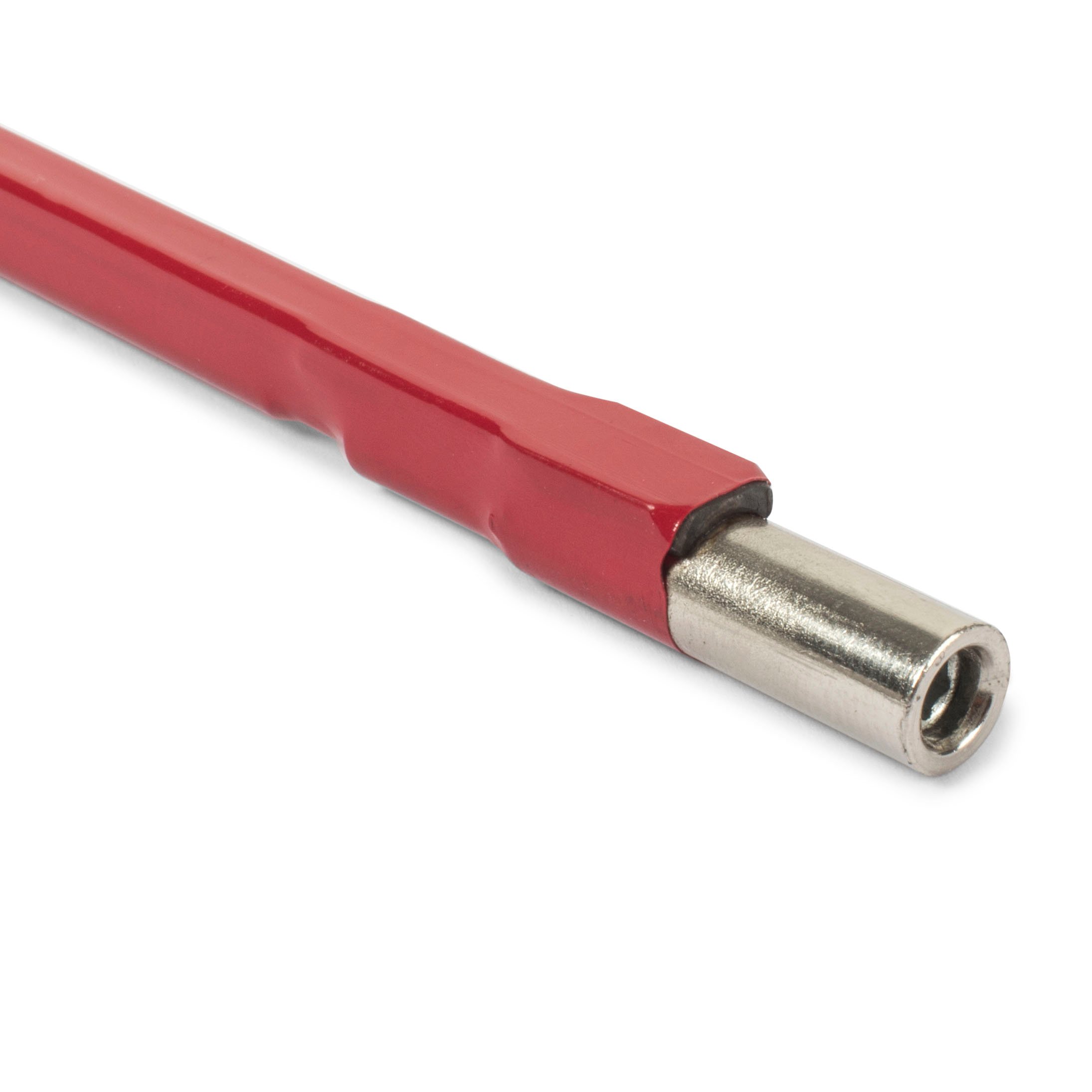Truss Rod Channel for Hot Rod Low Profile Truss Rods
Reaming a truss rod channel to fit a Low Profile Truss Rod
At StewMac, we are constantly updating our tools and hardware. As a result, specs may change on an item. Here are the installation instructions for the two styles of the Hot Rod Low Profile 2-Way Truss Rod. Also included are instructions for the version that is out of production (#2556, #2557, and #2558)
Please look closely at the adjustable end of your rod to make sure you are using the correct installation instructions. Instructions for both models are included on this page.
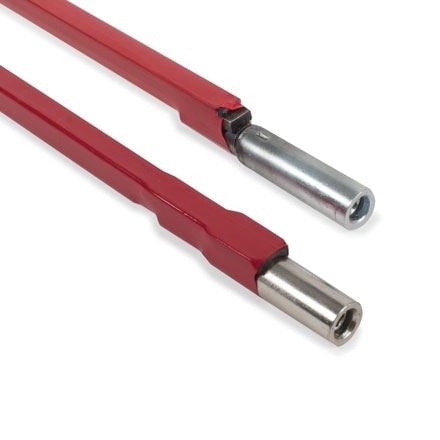
The first instructions are for models #2651 and #2652. These models have an additional tab on half of the adjusting nut housing. Match your rod to the picture below. Scroll down to see instructions for models #2650 and #2653
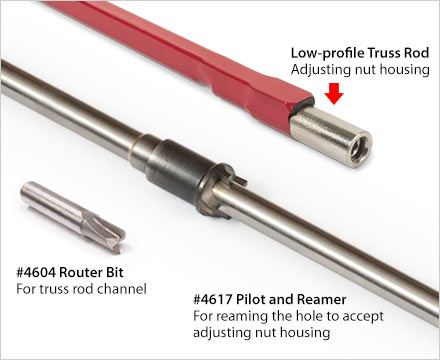
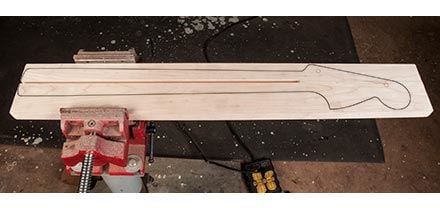
Our Low Profile Truss Rod fits a routed channel 1/4" wide x 3/8" deep. Our Router Bit is designed to rout this channel. After the channel is routed, it needs to be modified to accommodate the metal housing that holds the adjusting nut. Use the Piloted Reamer for this modification.
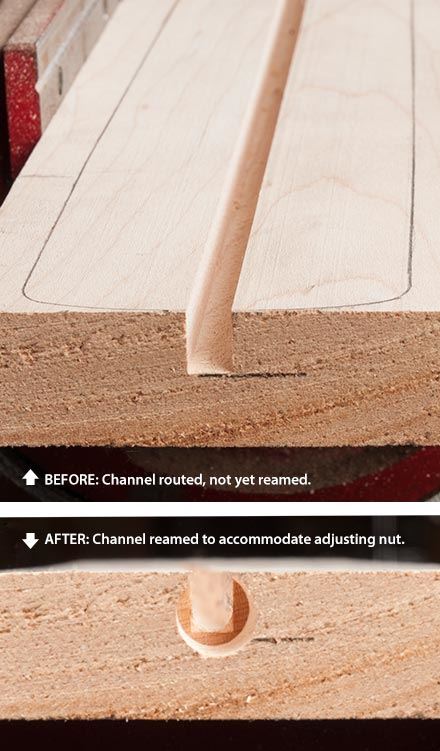
To accommodate the truss rod's adjusting nut, a hole needs to be reamed at the adjustment end of the truss rod channel. This hole is 3/8" in diameter and 2-1/8" deep. TIP: Rout your truss rod channel before cutting your neck to shape. Working with a rectangular neck blank makes it easy to clamp the work in a vise and to set up a fence for routing a straight channel.
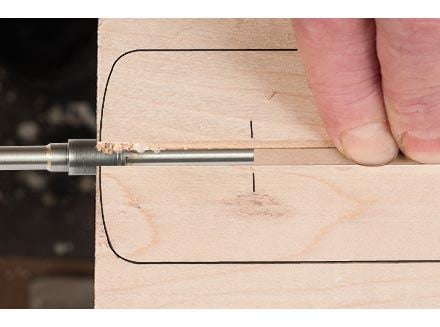
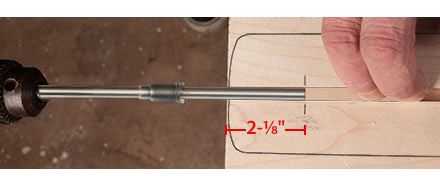
How to use the piloted reamer:
After the truss rod channel is routed, mark the depth of the hole that you will ream to match the length of the adjusting nut housing (2-1/8"). Slide the guide rod into the channel, pressing it flat to the bottom of the channel. Keeping it flat in the bottom of the channel will ensure that the hole is properly centered.
Use a temporary filler strip to hold the pilot flat in the bottom of the truss rod channel. Ream slowly, running your drill in the range of 200-300 RPM. Watch your pencil mark to know when to stop cutting.
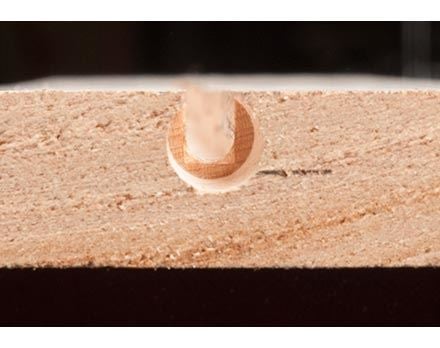
The finished hole. Clear away any chips and sawdust from the channel.
To accommodate the wider end of the truss rod, layout two lines 1/16" on either side of the 1/4" channel, up to your 2-1/8" mark.
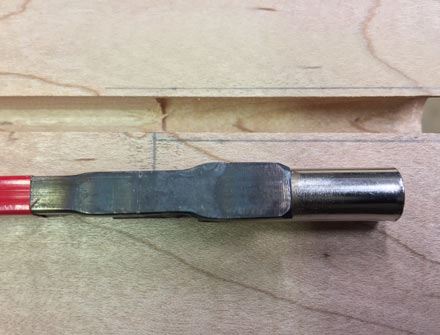
Using a ruler and a utility knife, score along the pencil lines—this will make it so you can easily pare the wood away with a chisel, avoiding chips or digging in. You can also set up a fence a use a router to remove this wood.
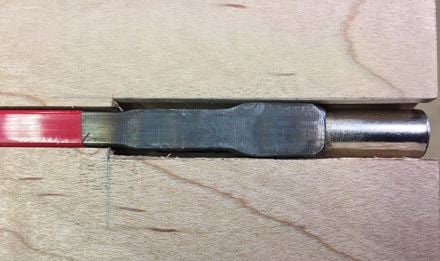
The installed Low Profile Truss Rod.
Truss Rod Channel for Hot Rod Low Profile Truss Rods
Models #2650 and #2653. Please look closely at the adjustable end of your rod to make sure you are using the correct installation instructions. These models do not have an addition tab on the adjusting nut. Match your rod to the picture below.
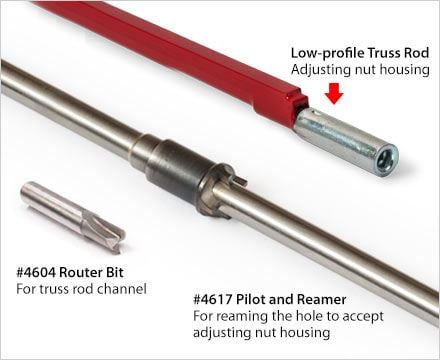

Our Low Profile Truss Rod fits a routed channel 1/4" wide x 3/8" deep, that runs the full length of the truss rod. The 3/8" deep channel is followed by a 13/32" deep rout that is 4" long from the adjustment end of the neck. The 13/32" deep 4" long rout gives added clearance for the thicker end of the rod near the collar behind the adjustment nut. Our Router Bit is designed to rout this channel. After the channel is routed, it needs to be modified to accommodate the metal housing that holds the adjusting nut. The Piloted Reamer is for making this modification.
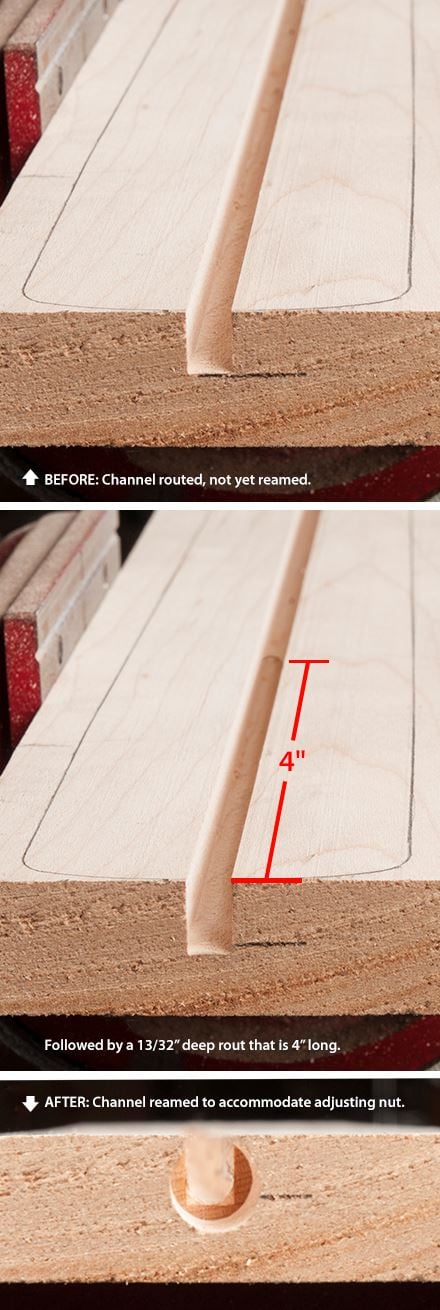
To accommodate the truss rod's adjusting nut, a hole needs to be reamed at the adjustment end of the truss rod channel. This hole is 3/8" in diameter and 2" deep. TIP: Rout your truss rod channel before cutting your neck to shape. Working with a rectangular neck blank makes it easy to clamp the work in a vise and to set up a fence for routing a straight channel.
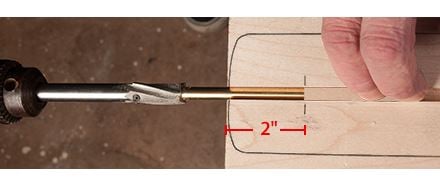
How to use the piloted reamer:
After the truss rod channel is routed, mark the depth of the hole that you will ream to match the length of the adjusting nut housing (2"). Slide guide rod into channel, pressing it flat to the bottom of the channel. Keeping it flat in the bottom of the channel will ensure that the hole is properly centered.

Use a temporary filler strip to hold the pilot flat in the bottom of the truss rod channel. Ream slowly, running your drill in the range of 200-300 RPM. Watch your pencil mark to know when to stop cutting.

The finished hole. Clear away any chips and sawdust from the channel.
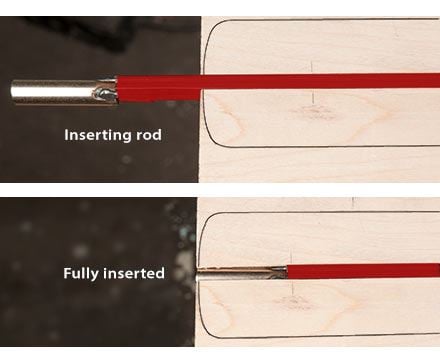
Slide the truss rod into the end of the channel. The flat side of the rod faces up toward the fingerboard. If the rod is tight, tap it in gently with a mallet to seat it home.
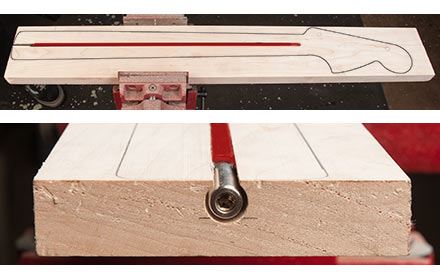
The installed Low Profile Truss Rod.
Reaming a truss rod channel to fit a Low Profile Truss Rod
Model #2556, #2557, and #2558. These models are no longer in production. These have a black wrap.
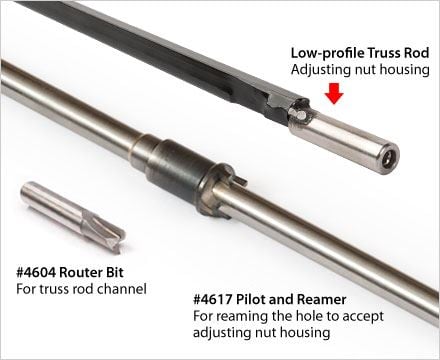

Our Low Profile Truss Rod fits a routed channel 1/4" wide x 3/8" deep. Our Router Bit is designed to rout this channel. After the channel is routed, it needs to be modified to accommodate the metal housing that holds the adjusting nut. The Piloted Reamer is for making this modification.

To accommodate the truss rod's adjusting nut, a hole needs to be reamed at the adjustment end of the truss rod channel. This hole is 3/8" in diameter and 1-1/2" deep. TIP: Rout your truss rod channel before cutting your neck to shape. Working with a rectangular neck blank makes it easy to clamp the work in a vise and to set up a fence for routing a straight channel.
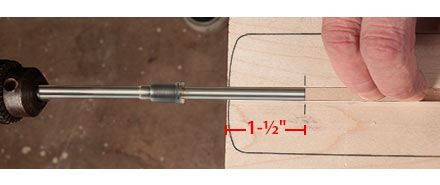
How to use the piloted reamer:
After the truss rod channel is routed, mark the depth of the hole that you will ream to match the length of the adjusting nut housing (1-1/2"). Slide guide rod into channel, pressing it flat to the bottom of the channel. Keeping it flat in the bottom of the channel will ensure that the hole is properly centered.

Use a temporary filler strip to hold the pilot flat in the bottom of the truss rod channel. Ream slowly, running your drill in the range of 200-300 RPM. Watch your pencil mark to know when to stop cutting.

The finished hole. Clear away any chips and sawdust from the channel.
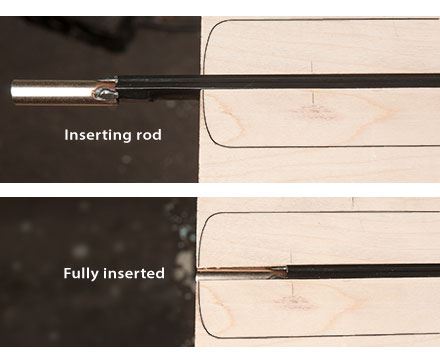
Slide the truss rod into the end of the channel. The flat side of the rod faces up toward the fingerboard. If the rod is tight, tap it in gently with a mallet to seat it home.
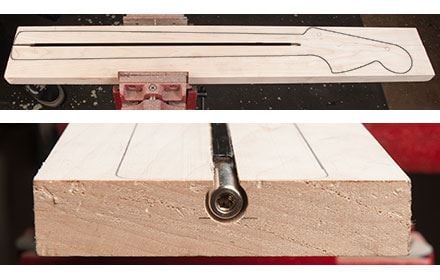
The installed Low Profile Truss Rod.
